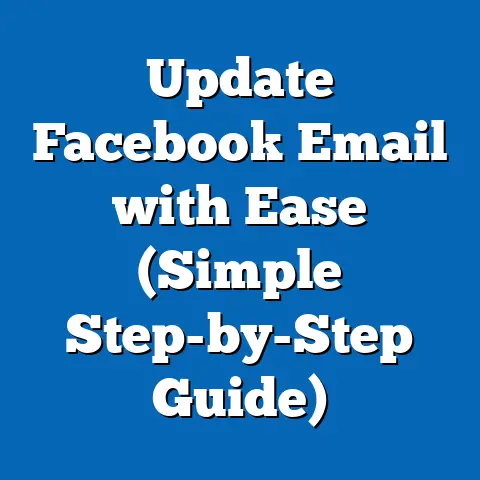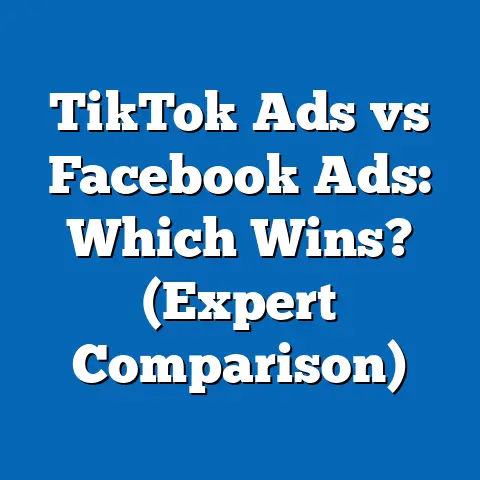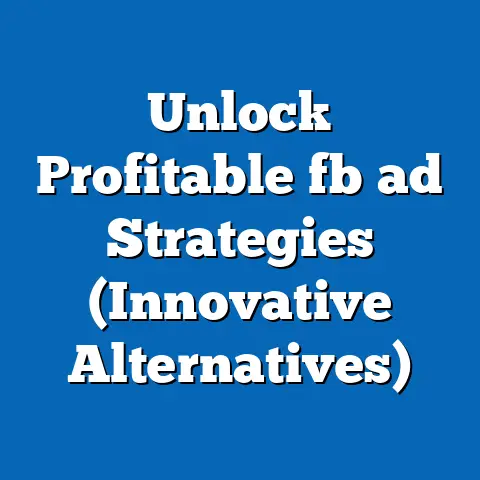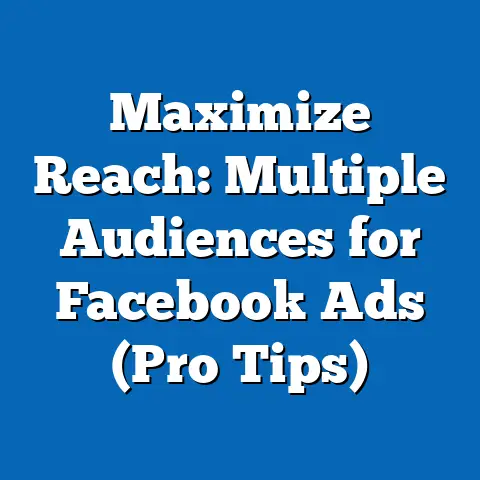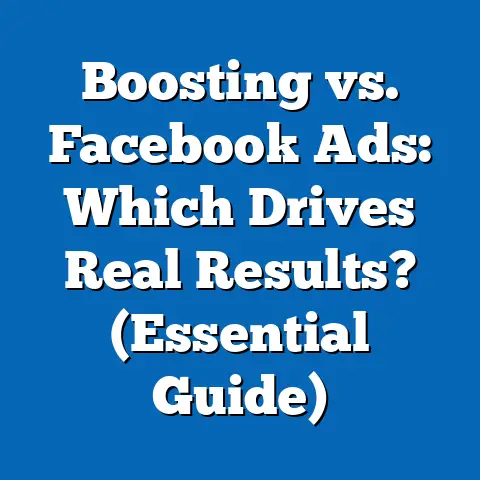Boost Engagement: Adding Emojis in Facebook Ads (Pro Tips)
The concept of “ease of cleaning” might seem an unusual starting point for a discussion about digital marketing strategies such as incorporating emojis in Facebook ads. However, it serves as a metaphorical and historical framework to understand how simplicity, efficiency, and accessibility have shaped human behavior, communication, and even modern advertising tactics. Historically, the drive for ease—whether in household chores, industrial processes, or communication—has been a defining characteristic of societal progress, reflecting a broader desire for efficiency and relatability that mirrors the appeal of emojis in digital spaces.
Ease of cleaning, as a literal and symbolic concept, emerged as a transformative idea during the Industrial Revolution in the 18th and 19th centuries, when innovations like the washing machine and vacuum cleaner revolutionized domestic life. These advancements were not merely technological but also cultural, reflecting a societal shift toward valuing time, convenience, and accessibility—values that continue to influence how we design tools, including digital ones like emojis. The societal implications of this drive for simplicity are profound, as they underscore a universal human preference for intuitive, low-effort solutions, a principle that directly applies to the effectiveness of emojis in capturing attention and fostering engagement in the fast-paced world of social media.
Section 1: Emojis as a Modern Tool for Simplification and Engagement
Emojis have become a cornerstone of digital communication since their inception in the late 1990s, evolving from simple smiley faces to a vast library of symbols representing emotions, objects, and cultural nuances. Much like the societal push for ease of cleaning reduced friction in daily tasks, emojis reduce the cognitive load in online interactions by conveying tone and intent in a visually immediate way. According to a 2021 study by Adobe, 93% of global internet users have used an emoji, with 60% stating they help clarify messages that might otherwise be misunderstood in text form.
This simplification is particularly critical in the context of Facebook ads, where advertisers have mere seconds to capture a user’s attention amidst a flood of content. Emojis act as visual cues that break through the noise, offering a quick, emotional connection that text alone often struggles to achieve. Their role mirrors the historical drive for efficiency—much like a dishwasher streamlined household chores, emojis streamline communication in a cluttered digital landscape.
However, the use of emojis in advertising is not without nuance. While they can enhance relatability, their effectiveness depends on context, audience demographics, and cultural interpretations. This section delves into why emojis resonate so deeply in digital marketing and how their strategic use aligns with broader societal trends toward simplicity and emotional connection.
Section 2: Historical Context of Visual Communication and Advertising
To fully appreciate the role of emojis in modern advertising, it’s essential to trace the history of visual communication in marketing. Long before digital platforms, advertisers relied on imagery—illustrations, logos, and symbols—to convey messages quickly and memorably. The early 20th century saw the rise of iconic mascots like the Pillsbury Doughboy and visual branding like Coca-Cola’s distinctive script, which tapped into the human brain’s preference for visual processing over text.
Emojis are a natural evolution of this trend, born out of the need for quick, expressive communication in the digital age. Created by Shigetaka Kurita in Japan in 1999 for NTT DoCoMo’s mobile internet platform, emojis were initially a set of 176 pixelated icons designed to add emotional depth to text messages. Their adoption exploded with the rise of smartphones and social media, paralleling historical shifts toward efficiency in communication, much like the telegraph or telephone did in earlier eras.
Societally, the integration of emojis into everyday communication reflects a broader cultural shift toward informality and emotional transparency, values that resonate with younger generations like Millennials and Gen Z. This mirrors the historical push for ease in domestic life—where innovations made tasks less formal and more accessible, emojis democratize emotional expression in advertising, allowing brands to connect on a human level. Yet, as we’ll explore, their use must be balanced to avoid alienating audiences or diluting brand professionalism.
Section 3: Why Emojis Work in Facebook Ads—A Data-Driven Perspective
The effectiveness of emojis in Facebook ads is not merely anecdotal; it is supported by a growing body of research. A 2020 study by Socialinsider found that posts with emojis on social media platforms, including Facebook, see a 15% higher engagement rate compared to those without. This is attributed to emojis’ ability to draw the eye—much like a brightly colored ad in a sea of monochrome—and evoke an emotional response, which is a key driver of user interaction.
Emojis also align with the psychological principle of “emotional contagion,” where seeing an emotion expressed visually can trigger a similar feeling in the viewer. For instance, a smiling emoji in an ad for a family product can subconsciously evoke warmth and trust, encouraging clicks or shares. This mirrors historical advertising tactics, such as using smiling faces in print ads to build rapport, but emojis offer a more immediate, universal language in the digital realm.
However, the data also reveals limitations. Overuse of emojis can lead to a 12% drop in perceived credibility, according to a 2022 survey by MarketingDive, particularly among older demographics or in industries like finance or law where professionalism is paramount. This underscores the need for strategic implementation, which we’ll address in the pro tips section.
Section 4: Generational Dynamics and Emoji Use in Advertising
Generational differences play a significant role in how emojis are perceived and received in Facebook ads. Younger generations, particularly Gen Z (born 1997–2012) and Millennials (born 1981–1996), have grown up with digital communication as a norm, making them more receptive to emojis as a natural extension of language. A 2021 Pew Research study found that 78% of Gen Z users on social media use emojis daily, compared to 54% of Baby Boomers (born 1946–1964).
For advertisers, this means tailoring emoji use to the target audience. While a playful emoji-laden ad might resonate with Gen Z consumers for a trendy fashion brand, it could appear unprofessional or confusing to Baby Boomers browsing for healthcare services. This generational nuance parallels historical shifts in advertising tone—much like radio ads in the 1940s catered to a broad, formal audience, while TV ads in the 1980s embraced vibrant, youthful visuals for the Baby Boom generation.
Moreover, cultural context within generations matters. Emojis can carry different meanings across regions— a thumbs-up emoji might signal approval in the U.S. but be offensive in parts of the Middle East. Advertisers must navigate these complexities to avoid missteps, much as historical marketers adapted campaigns to regional dialects or customs.
Section 5: Pro Tips for Adding Emojis in Facebook Ads
Incorporating emojis into Facebook ads requires a strategic approach to maximize engagement while maintaining brand integrity. Below are evidence-based pro tips to guide advertisers, reflecting both data insights and societal trends toward simplicity and connection.
1. Align Emojis with Brand Voice and Audience Expectations
Before adding emojis, consider your brand’s tone and target demographic. A playful brand targeting Gen Z might use emojis like 😂 or 🔥 to convey humor or excitement, while a luxury brand might opt for subtler symbols like ✨ to suggest elegance. Research from Hootsuite (2022) shows that 68% of users are more likely to engage with ads that match their emotional expectations, so alignment is key.
2. Use Emojis Sparingly for Impact
Less is often more when it comes to emojis in ads. Studies indicate that 1–3 emojis per post or ad copy increase engagement by 10–15%, while overuse (5 or more) can reduce click-through rates by 8% due to perceived clutter (Socialbakers, 2021). Place emojis at the beginning or end of text to draw attention without overwhelming the message.
3. Leverage Emojis to Highlight Key Actions or Emotions
Emojis can serve as visual calls-to-action (CTAs) or emotional amplifiers. For example, a pointing finger emoji (👉) can direct users to “Click Here,” while a heart (❤️) can emphasize love for a product. A 2020 experiment by Buffer found that CTAs with relevant emojis saw a 17% higher response rate compared to text-only versions.
4. Test and Analyze Emoji Performance
Not all emojis resonate equally across campaigns. Use A/B testing on Facebook Ads Manager to compare ads with and without emojis, or test different symbols for the same message. Data from Sprout Social (2022) shows that campaigns with iterative testing improve engagement by up to 20% over static approaches.
5. Be Culturally and Contextually Aware
Emojis are not universally interpreted, so research your audience’s cultural context. For instance, avoid using the peach emoji (🍑) in professional contexts where it might be seen as suggestive. Tools like Emojipedia can help clarify meanings, ensuring your ad avoids unintended offense.
6. Pair Emojis with Strong Copy
Emojis should complement, not replace, compelling ad copy. A 2021 study by MarketingProfs found that ads with emojis and clear, concise text outperformed those relying solely on visuals by 14% in conversion rates. Use emojis to enhance emotion or emphasis, not as a crutch for weak messaging.
These tips reflect the broader societal trend toward efficient, emotionally resonant communication, echoing the historical push for ease in daily life. When applied thoughtfully, emojis can transform a standard ad into a memorable, engaging experience.
Section 6: Societal and Workplace Implications of Emoji-Driven Advertising
In the workplace, the acceptance of emojis in professional contexts signals a blurring of formal and informal boundaries, particularly as younger generations enter leadership roles. A 2022 LinkedIn survey found that 41% of professionals now view emojis as acceptable in work-related social media posts, a trend driven by Millennials and Gen Z. For advertisers, this suggests an expanding window to use emojis in B2B campaigns, though with caution to maintain credibility.
Economically, the effectiveness of emojis can lower advertising costs by boosting organic engagement, reducing reliance on paid reach. A 2021 report by eMarketer noted that brands with high emoji-driven engagement saw a 9% reduction in cost-per-click on Facebook ads, as users were more likely to share or interact naturally. This efficiency parallels historical innovations in ease of cleaning, where time and resource savings drove adoption.
However, there are risks. Over-reliance on emojis could contribute to a “dumbing down” of communication, as critics argue it prioritizes emotion over substance. Additionally, misinterpretation across cultural or generational lines can harm brand reputation, underscoring the need for nuanced strategies.
Section 7: Technological and Cultural Factors Shaping Emoji Use
Technologically, the proliferation of emojis has been fueled by platform support and mobile accessibility. Unicode standardization in 2010 ensured emojis displayed consistently across devices, while Facebook’s integration of emoji reactions in 2016 normalized their use in social interactions. This technological ease mirrors historical innovations like the mass production of cleaning tools, making a once-niche concept universally accessible.
Culturally, emojis reflect a global push toward inclusivity and diversity. Updates to emoji libraries now include skin tone options and gender-neutral representations, responding to societal demands for representation. For advertisers, this offers opportunities to connect with diverse audiences but requires sensitivity to avoid tokenism or stereotyping.
Economic factors also play a role. The low cost of adding emojis to ads—requiring no design expertise or budget—makes them an attractive tool for small businesses competing with larger brands. This democratization of engagement tools echoes the societal impact of affordable cleaning innovations, leveling the playing field for households of varying means.
Section 8: Forward-Looking Insights and Uncertainties
As digital communication evolves, the role of emojis in Facebook ads is likely to expand, driven by advancements in augmented reality (AR) and artificial intelligence (AI). Future ads might feature animated or personalized emojis tailored to user preferences, further enhancing engagement. A 2023 forecast by Gartner predicts that 70% of social media ads will incorporate dynamic visual elements like emojis by 2025.
However, uncertainties remain. Will overuse lead to emoji fatigue, reducing their impact over time? Could generational shifts—such as Gen Alpha (born 2013 onward) developing new visual languages—render current emojis obsolete? Additionally, regulatory scrutiny on digital advertising might impose restrictions on emoji use if deemed manipulative or misleading.
Despite these unknowns, the core principle of simplicity—rooted in historical drives for ease of cleaning and communication—will likely endure. Emojis, or their successors, will remain a tool for cutting through digital clutter, provided advertisers adapt to changing cultural and technological landscapes.
Conclusion
The strategic use of emojis in Facebook ads embodies a modern manifestation of humanity’s longstanding quest for ease and efficiency, from the innovations of the Industrial Revolution to the digital shortcuts of today. Backed by data showing higher engagement rates and emotional resonance, emojis offer a powerful tool for advertisers to connect with audiences in a crowded online space. However, their success hinges on thoughtful implementation—balancing cultural sensitivity, generational preferences, and brand alignment.
As society continues to prioritize simplicity and emotional connection, emojis are poised to play an enduring role in digital marketing, much like labor-saving devices transformed domestic life. Yet, their future will depend on navigating emerging challenges, from cultural missteps to technological shifts. By grounding strategies in research and adaptability, advertisers can harness the power of emojis to not only boost engagement but also reflect the evolving dynamics of human communication.
This analysis, spanning historical context to actionable pro tips, underscores that while emojis are a small symbol, their impact on advertising and society is anything but trivial. As we look ahead, the lesson from history remains clear: tools that simplify and connect will always find a place in our collective story.

